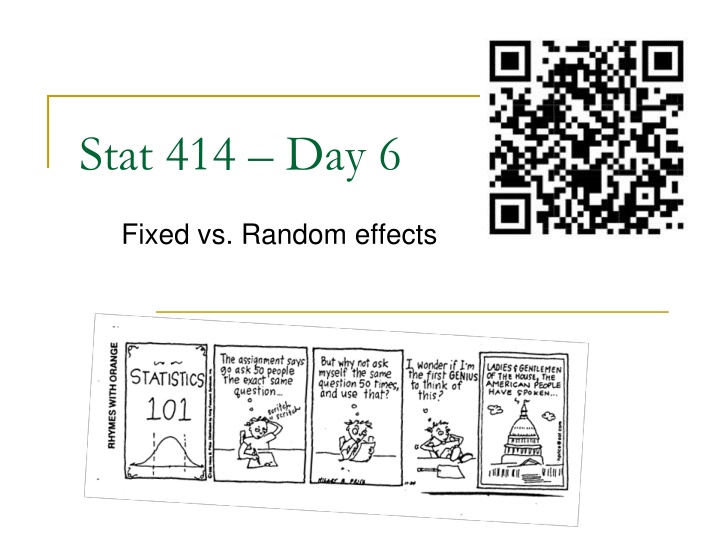
Exploring Multilevel Data Structures and Statistical Models
Discover how to analyze multilevel data structures, such as subjects within organizations, repeated measures, and cluster sampling. Dive into fixed vs. random effects, raw data vs. model estimates, and diagnostic analysis in statistical modeling.
Download Presentation

Please find below an Image/Link to download the presentation.
The content on the website is provided AS IS for your information and personal use only. It may not be sold, licensed, or shared on other websites without obtaining consent from the author. If you encounter any issues during the download, it is possible that the publisher has removed the file from their server.
You are allowed to download the files provided on this website for personal or commercial use, subject to the condition that they are used lawfully. All files are the property of their respective owners.
The content on the website is provided AS IS for your information and personal use only. It may not be sold, licensed, or shared on other websites without obtaining consent from the author.
E N D
Presentation Transcript
Stat 414 Day 6 Fixed vs. Random effects
Project Assignment Step 1: Find multilevel data (hierarchical or nested structure) Subjects within organization Students/classroom, employees/supervisor Repeated measures within subjects Cluster sampling, Cluster randomized trials Survey respondents within country
Some cool facts ?2= ???? ?, ? = 1 ??????? ??????? = 1 ??????? 2 ???? ???????
HW 2 Raw data vs. Model estimates
FEV data Effect or Indicator coding? Is 2.92 = ?? least squares mean If 0.71 the difference in the two group means? Make sure comparison is clear in your interpretation (e.g., vs. overall mean vs. reference group)
FEV data Model 1 residual/diagnostic analysis
FEV data Often helpful to explore whether residuals are related to other variables not currently in the model
Added variable plots A visual representation of the adjusted association
FEV data After adjusting for age Better: comparing avg FEV of smokers and non-smokers of the same age Have made a HUGE assumption here The difference in avg FEV between smokers and non smokers is the same at each age .
Example (workcrew3.txt) Suppose I want to study the effect of crew size and bonus amount on crew productivity What happens if I adjust for bonus?
Example (workcrew1.txt) Suppose I want to study the effect of crew size and bonus amount on crew productivity What happens if I adjust for bonus?
In other words If x1 and x2are not related, then adding x2 to the model will not change the coefficient of x1 Might be true for a controlled experiment, but seldom true for an observational study
What does each graph tell you? Added variable plots
Finger tapping study One-way ANOVA can help us see whether there is a significant difference among the 3 types of stimulants But doesn t account for the person to person variation
Finger tapping study Does participant matter? ICC = (1826 150.5)/(1826+150.5*2) = .788
Pairwise ICC r = .670 How correlated are pairs of observations within each major
Finger tapping study So add the participant into the model Reminder to always be clear which p-value you are using!
Next question Suppose we had a larger study with lots more participants. What would be a downside to including the participant variable in the model?
Fixed vs. Random When you have multilevel data, Level 1 units are clustered within Level 2 units. I can consider the level 2 grouping variable as a categorical variable. With categorical variables, we have the option of treating them as fixed vs. random Fixed: Only want to make conclusions about the specific levels we have observed (e.g., Race/Ethnicity) Random: The observed outcomes (e.g., school ID) is not really important to me, I m thinking of the schools as a random sample of a larger population and want to make inferences about all schools, not just those in my study
Fixed vs. Random Effects Groups are unique entities and want to make inferences about (only) those groups Analogy: Which one? Groups are regarded as a sample from a population and want to make inference about that population Group sizes are small (avoid overfitting) Group effects not normally distributed Fixed Random Random ?
To Do Submit HW 3 (Fri night) Quiz 6 (Fri 7am) Willing to consider later Computer problem 6 (Monday night) Project proposals (Monday night) (Thurs am office hour in zoom)
